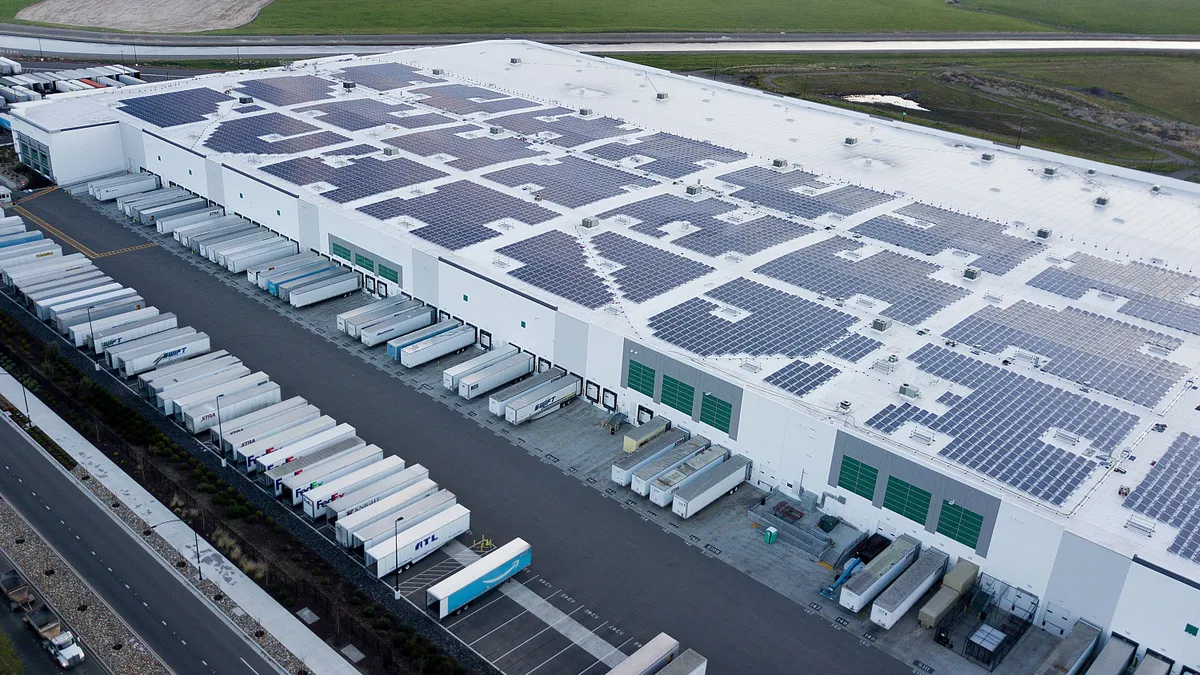Dive Brief:
-
Recent heatwaves affecting much of the U.S. and Europe this summer are only the beginning of what is predicted to be continued above-record temperatures for decades to come, writes Architect magazine. To address this problem in the built environment, architects, builders and developers are increasingly turning to cool-roof technologies that reflect more sunlight and absorb less heat than a standard roof.
-
A drawback of this approach is that in cold and moderate regions, traditional cool roofs reflect sunlight during wintertime rather than absorb it, resulting in colder interiors and higher heating bills.
-
A new generation of these systems address that problem by using materials that can change their reflectance and thermal emittance properties seasonally. These products use technologies such as phase change material (PCM) and smart coatings and surfaces to keep buildings cool in summer and warm in winter.
Dive Insight:
Cool roofs can be made of a highly reflective type of paint, a sheet covering or highly reflective tiles or shingles. Nearly any type of building in any locale can benefit from a cool roof, but builders and designers must consider the climate and other factors before deciding to install one, according to the Department of Energy.
Standard or dark roofs can reach temperatures of 150 degrees F or more in the summer sun. A cool roof under the same conditions could stay more than 50 degrees F cooler and save energy and money by using less air conditioning, the DOE says.
As the need for more climate-resilient building products increases, scientists around the world are studying new cool roof products that can change with the seasons. They include:
- A system that encapsulates an inorganic PCM between reflective aluminum foil sheets. Researchers found that PCMs employed in this way reduce summer cooling loads without impairing winter thermal performance.
- Smart coatings that may be applied directly to roofing materials to selectively reflect and absorb heat. One of these, United Environment & Energy's bio-based thermochromic material, is made of waste cooking oil.
- A surface technology that “sweats” like human skin to cool buildings. Designed by scientists in Switzerland, the system incorporates a thermo-responsive hydrogel that releases stored water when the air temperature exceeds 90 degrees F. As this water evaporates, it provides a cooler surface temperature for about three hours, researchers found.
- Smart ceramic roof tiles with a surface coating of tungsten trioxide that allow infrared light to pass through at temperatures below 120 degrees F but block rays above that threshold.















